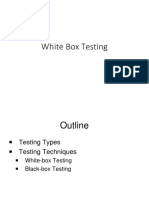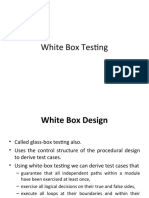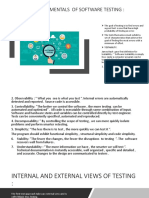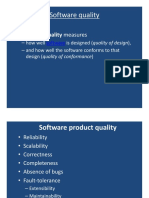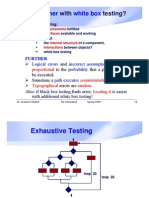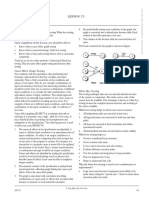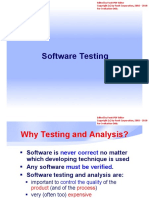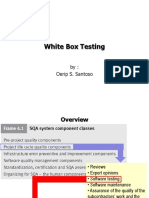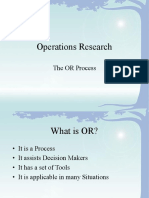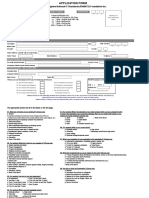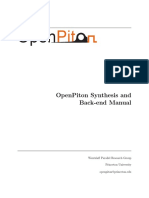0% found this document useful (0 votes)
68 views30 pagesWhitebox Testing1 (Recovered)
White-box testing involves testing internal program structures and operations. It requires knowledge of the program's code and design. Key aspects of white-box testing include testing all logical paths, conditions, loops, and data flows to ensure all code elements are executed as specified. White-box techniques include basis path testing, condition testing, loop testing, and data flow testing. These aim to derive test cases that execute every statement and decision path within a program.
Uploaded by
Fahim RockyCopyright
© © All Rights Reserved
We take content rights seriously. If you suspect this is your content, claim it here.
Available Formats
Download as PDF, TXT or read online on Scribd
0% found this document useful (0 votes)
68 views30 pagesWhitebox Testing1 (Recovered)
White-box testing involves testing internal program structures and operations. It requires knowledge of the program's code and design. Key aspects of white-box testing include testing all logical paths, conditions, loops, and data flows to ensure all code elements are executed as specified. White-box techniques include basis path testing, condition testing, loop testing, and data flow testing. These aim to derive test cases that execute every statement and decision path within a program.
Uploaded by
Fahim RockyCopyright
© © All Rights Reserved
We take content rights seriously. If you suspect this is your content, claim it here.
Available Formats
Download as PDF, TXT or read online on Scribd
/ 30















